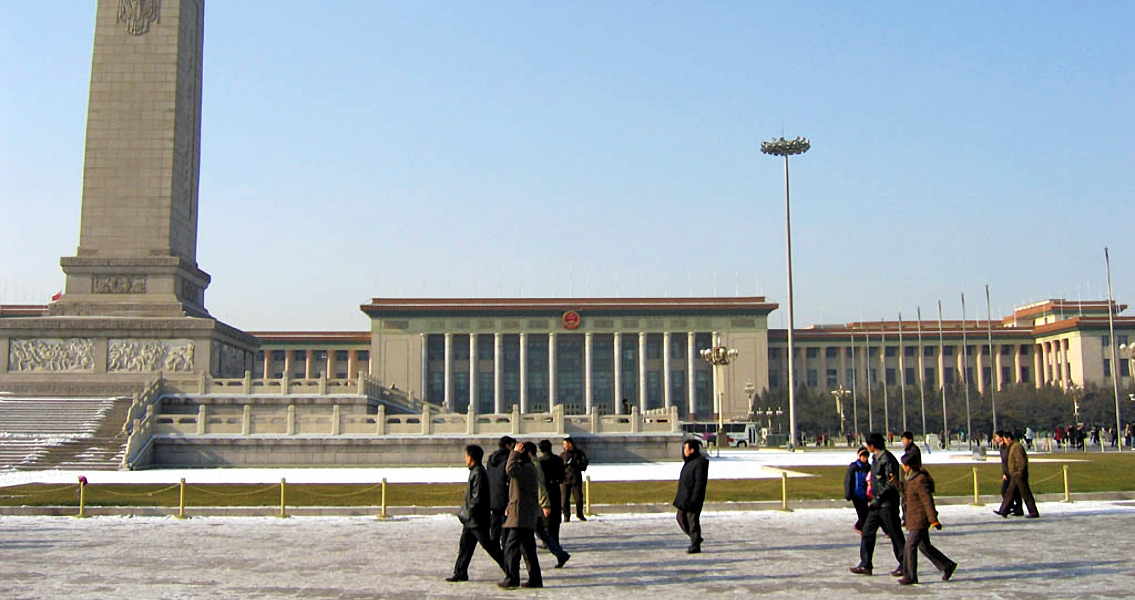<![CDATA[On 21st April 1989, Chinese Students gathered in Tiananmen Square, Beijing. It marked the start of a protest which ended with brutal suppression from the Chinese government in one of the most shocking moments of the late twentieth century. Some 100,000 students gathered in the square on the 21st to commemorate Hu Yaobang, the former Secretary of the Chinese Communist Party who had died of a heart attack six days before, and to voice their discontent at the Chinese government. Hu, who had been a member of the Communist party since the 1930s, was banished to the countryside as a part of Mao's purging of supposedly disloyal elements during the Cultural Revolution. Following Deng Xiaoping's ascension to power after Mao's death, Hu was reinstated into the Communist party as general secretary. He built a reputation as one of the most outspoken members of the liberal wing of the Communist government, supporting Deng's political reforms but also advocating social and political change. Student uprisings in 1986, born of a frustration at the slow pace of reform in China and repeated attempts by the government to purge the country of Western influence, divided the Communist party. Hu argued that a compromise should be reached with the groups of demonstrators that had started occupying city squares throughout the country. Hu's disagreement with the conservative wing of the Communist party ultimately proved costly, and in early 1987 he was forced to resign. Nevertheless, his time in power had seen him build a reputation as an important figure in China's liberal movement. The day after the students had gathered in Tiananmen Square, an official memorial service was held for Hu in The Great Hall of the People, to which students carried a petition demanding a meeting with Premier Li Peng. The Chinese government refused to authorise the meeting, triggering a university boycott across the country and increasing public demand for reform. In the wake of escalating tensions, the Chinese government issued a warning that any mass demonstration would be met with force. On 27th April, students from over forty Chinese universities marched on Beijing, in defiance of the government's threats. For symbolic reasons, many of the protesters again descended on Tiananmen Square, the site where Mao had first proclaimed the People's Republic of China. Some sources claim that as many as a million students were present at Tiananmen Square at the height of the protest, but demonstrators also marched to squares in other cities to protest the reactionary government. Martial law was declared in Beijing on the 20th May, and the Chinese government ordered the army into the city to disperse the crowds at Tiananmen Square. A campaign by the students managed to block the army units on the outskirts of the city, forcing it to halt its advance. With the protests escalating over the next few weeks with little sign of a peaceful resolution, the Chinese government became increasingly desperate to silence the uprising. On 3rd June the army was ordered to disperse the protestors at any cost. Brutal attacks by the troops saw Tiananmen Square cleared by the end of the next day. Hundreds of protesters were arrested or killed in the crackdown, with an unknown number of others being executed afterwards. The army's attack on the students and dissidents in Tiananmen Square highlighted in cold clarity that the belief China was undergoing a process of liberalisation was mistaken. In the short term, the international community imposed trade sanctions on China as punishment for the attack on its own people, but the sanctions were short lived. China released several hundred imprisoned dissidents in late 1990, encouraging the international community to relax the trade restrictions on the country. The Chinese government's response to the protests started on 21st April, 1989, however, had already sent a clear message to any potential dissidents in the country. ]]>
The Start of the Tiananmen Square Protest
